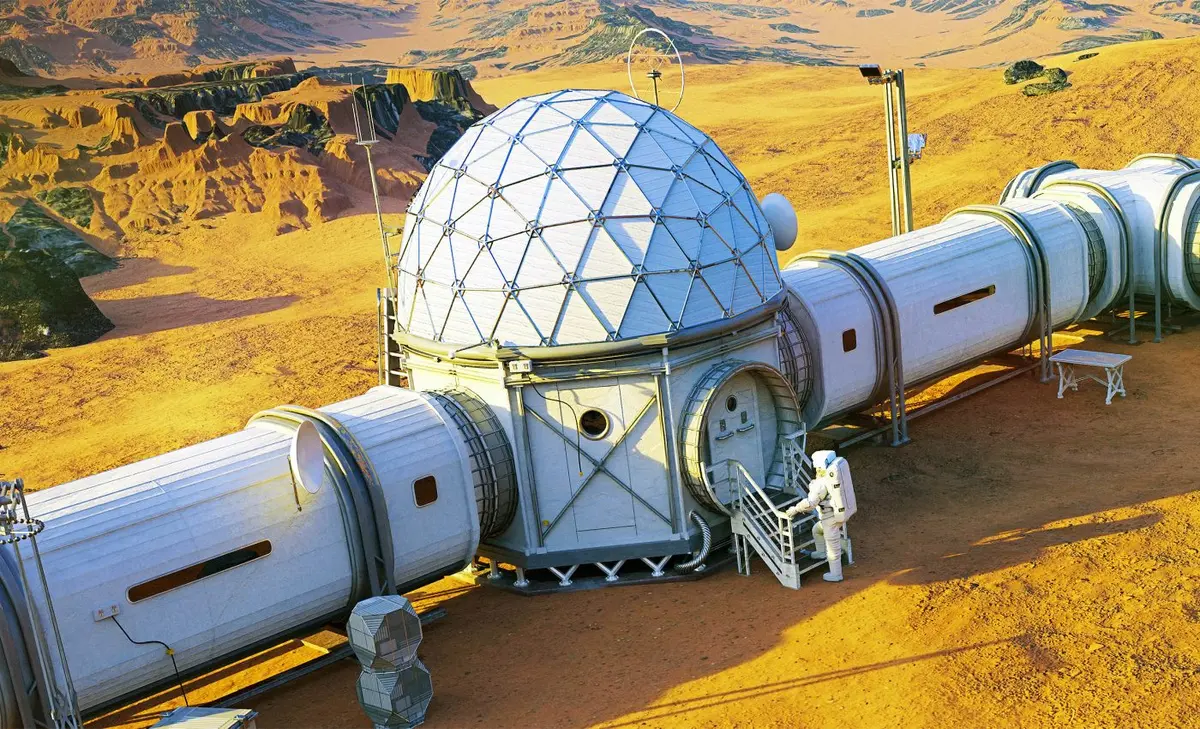NASA will use fungi to “grow homes” on Mars and the Moon
- October 4, 2024
- 0
Imagine: Astronauts who land on Mars or the Moon grow their own homes using bricks from mushroom mycelium. It’s like something out of a science fiction novel, right?
Imagine: Astronauts who land on Mars or the Moon grow their own homes using bricks from mushroom mycelium. It’s like something out of a science fiction novel, right?

Imagine: Astronauts who land on Mars or the Moon grow their own homes using bricks from mushroom mycelium. It’s like something out of a science fiction novel, right? Not quite like that. This concept is currently being researched by NASA and may not be as far-fetched as it seems at first glance.
Lynn Rothschild, a senior scientist at NASA’s Ames Research Center in the heart of California’s Silicon Valley, is leading this unique study. Rothschild and his team are pushing the boundaries of space habitat construction with their project, which they affectionately call “Extra-Planetary Mycodone.”
The project recently received funding through NASA’s Innovative Advanced Concepts (NIAC) program.
As Walt Engelund, deputy program manager for NASA’s Space Technology Mission Office, said, “We are committed to developing technologies to transport our astronauts, house our researchers, and facilitate valuable research.” This commitment is reflected in the $2 million NIAC Phase III award to the Rothschild team, which will support their research over the next several years.
Are you wondering how this concept works? It’s actually pretty simple. Instead of carrying huge construction materials from Earth, astronauts will bring with them lightweight structures impregnated with dormant fungi. Once it reaches its final destination, the touch of water is enough to awaken the fungi and stimulate their growth, creating a solid habitat around the frame.
This ingenious method could save a lot of resources and ease the burden of space missions.
Mycelium, the filamentous structures that make up the bulk of fungi, is the MVP here. They can grow into strong, complex forms that are ideal for creating living spaces. They can also be kept safely to prevent any contamination from a foreign environment.
NASA Administrator Bill Nelson summarizes: “As NASA prepares to explore more space than ever before, it will need new sciences and technologies that do not yet exist.”
The Mycotecture Off Planet project has adopted this visionary approach. How do you live ecologically off Earth? Improve your living spaces!
But it’s not just about building houses; It is about the development of multi-purpose materials that can perform various functions in space. For example, mycelium can be used to filter water and even extract minerals from wastewater that are vital to sustaining astronauts’ lives.
So where are we now? The team has already made major breakthroughs. Thanks to preliminary funding from NIAC, they demonstrated the feasibility of the concept by creating fungal-based biocomposites, testing prototypes, and even evaluating improvements such as radiation shielding. NASA’s commitment to innovative thinking is evident in this project.
“NASA’s Space Technology Team and the NIAC program are discovering visionary ideas—ideas that make the impossible possible,” says Bill Nelson.
With the newly secured funding, Rothschild and his team can focus on improving the material properties of fungal environments and move on to low-Earth orbit testing, a vital step before potential applications for Moon or Mars missions.
NIAC program executive director John Nelson emphasizes the value of these projects: “Mycotecture Off Planet is an example of how advanced concepts can change the way we envision future research missions.” As NASA prepares for Artemis targeting the Moon and Mars, projects like this could play an important role.
Why should you care about growing mushrooms in space? Besides the wow factor, this research also has the potential to impact us here on Earth. By focusing on sustainable building materials, technology developed for space can enable green practices at home.
Additionally, the success of such projects fuels inspiration and ignites scientific interest in future generations. It’s about pushing boundaries, rethinking possibilities, and finding solutions that benefit everyone. Could mycelium-based construction be our future in space and on Earth? These are interesting times for space exploration, and things that once seemed ugly are now within reach.
In summary, NASA’s investment in this unprecedented study to use fungi and mycelia to build bricks for space homes underscores the agency’s commitment to developing technologies that can make long-term life in space a reality.
Scientists like Lynn Rothschild are turning forward-thinking ideas into real solutions by “biggering the box.”
The next time you notice a mushroom popping up in your garden, think about its distant relative that could help humans live on the moon or Mars. The combination of biology and technology opens doors we never thought possible, and the journey is just beginning.
Source: Port Altele
As an experienced journalist and author, Mary has been reporting on the latest news and trends for over 5 years. With a passion for uncovering the stories behind the headlines, Mary has earned a reputation as a trusted voice in the world of journalism. Her writing style is insightful, engaging and thought-provoking, as she takes a deep dive into the most pressing issues of our time.